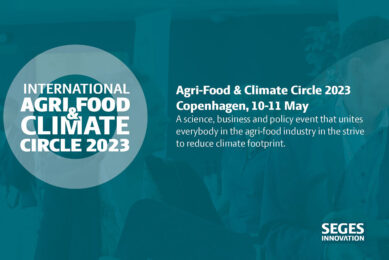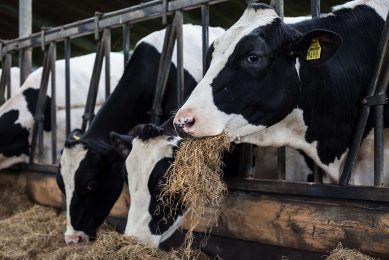Managing bacterial crowds

The rumen contains around 20% of the bodyweight of a cow. The main digestion of the cow’s feed takes place in this enormous organ and is carried out by zillions of microbes – and it takes place in an anaerobic environment. Oxygen is deadly for the system. When in balance the system works pretty well, with one exception – one of the major outputs into the environment is methane (CH4).
This greenhouse gas has a global warming potential of 25 compared to carbon dioxide (CO2) over a 100-year period. This means that methane emission has 25 times the impact on temperature of a carbon dioxide emission of the same mass over the following 100 years. With 8.4 years in the atmosphere methane has a large effect for a brief period. In contrast, carbon dioxide has a small effect for a long period (over 100 years). Because of this difference in effect and time period, the global warming potential (radiative forcing) of methane over a 20 year time period is much higher (72). Usually, excess methane from landfills and other natural producers of methane is burned so CO2 is released into the atmosphere instead of methane, because of its lower greenhouse gas potency.
But now let’s get back to the rumen again. How much does a cow contribute to global methane emissions? I am not going to entangle myself in numbers or percentages, because these are highly disputable, depending on whether you insist on having a daily piece of meat with your dinner, or advocate a vegan diet. What we do know is that cattle’s belching of methane contributes significantly to global warming.
Holstein-Friesian cows, weighing in at around 500 kg, have been found to emit between 350 and 415 grams of methane gas a day or roughly between 130 and 150 kg a year. This volume scared some politicians so much that they suggested installing a ‘fart’-tax on ruminants. If it is really a tax on farts, then it is not worth much, since 95% of the methane produced by ruminants comes out of the front and only 5% out of the rear end of the animal.
It is hardly impossible to capture the methane burps, so the only way to decrease the volume is by decreasing the production of methane in the rumen. In other words, one has to manipulate the bacterial crowd in the rumen. The only effective method in common use is feed additive antibiotics and ionophores (e.g. monensin), which inhibit hydrogen (H2) formation by microbes which provide H2 to methane forming bacteria. However, methane formation is decreased by only up to 25% and since the use of in-feed antibiotics in the EU is banned alternatives need to be found.
Plant extracts
Since the antibiotic ban in the EU was installed the search for alternatives has intensified. Essential oils, for example, proved to have an effect, but not as effective as the ionophores. At the Rowett Institute in the Scotland an EU funded study was carried out to find new plants and plant extracts “that decrease methane and nitrogenous emissions from ruminants and alleviate nutritional stress.”
In this Rumen-Up project more than 500 plants from all over the world were screened for their ruminal metabolism enhancing properties. Twenty-two positive hits were obtained (5 patented). To name two plants having promising effects in altering rumen fermentation, and methane reduction: Rheum nobile (aka Himalayan pot) and Salix cuprea (goat willow). The potential of these materials is being explored further to determine the precise chemical compound which is responsible for the observed effects.
Direct-fed microbials
Direct-fed microbials (yeasts) offer arguably the greatest potential for manipulation of ruminal fermentation. Yeasts strains or mutants can be selected that are best suited for particular applications. Many companies have selected the strain Saccharomyces cerevisiae (bakers yeast) for its beneficial properties (and mostly sold under more marketable names). It has widespread use in many industries, such as baking and brewing, so its properties are well understood. In the rumen this yeast is metabolically active but does not grow, which means that its concentration and activity can be readily controlled by its dietary inclusion level, ensuring maximum efficacy.











